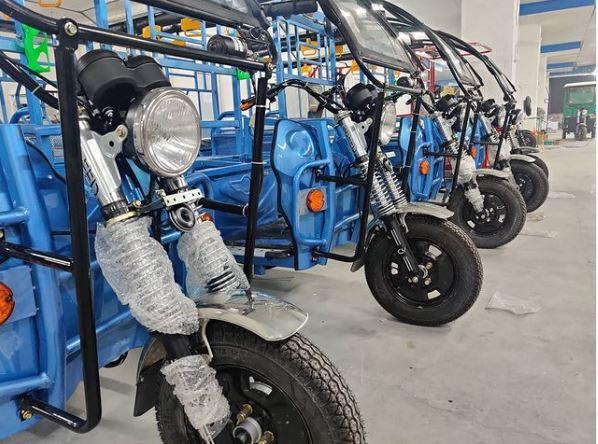Safety Standards and Regulations for E-Rickshaw Chassis
Introduction
E-Rickshaws, electric-powered versions of traditional rickshaws, have become an integral part of urban transport. As these vehicles gain popularity, ensuring the safety of their chassis becomes paramount. This post delves into the safety standards and regulations governing E-Rickshaw chassis, examining their significance, key standards, compliance challenges, and future trends.
Importance of Safety Standards
Passenger Safety
The primary concern in E-Rickshaw design is ensuring the safety of passengers. Safety standards address structural integrity, crashworthiness, and emergency exit provisions, creating a secure environment for riders.
Environmental Impact
Beyond passenger safety, standards also consider the environmental impact. Chassis materials and manufacturing processes are scrutinized to minimize the ecological footprint of E-Rickshaws.
Regulatory Bodies
Role of Government Agencies
Government bodies play a crucial role in establishing and enforcing safety standards. Understanding their role is pivotal for manufacturers to ensure compliance and avoid legal ramifications.
International Standards
E-Rickshaw manufacturers must also be aware of international safety standards. Harmonizing with global norms facilitates market expansion and ensures consistency in safety measures.

Key Safety Standards for E-Rickshaw Chassis
Frame Material Requirements
Safety standards dictate the materials permissible for E-Rickshaw chassis construction. This ensures durability and resilience, vital for withstanding the rigors of daily use.
Structural Integrity Tests
Chassis must undergo rigorous structural integrity tests to assess their ability to withstand stress and impact. Compliance with these tests guarantees a robust and safe design.
Brake System Standards
Ensuring efficient brake systems is a key aspect of safety standards. Properly functioning brakes are essential for preventing accidents and ensuring passenger safety.
Compliance Challenges
Common Issues Faced by Manufacturers
Manufacturers often encounter challenges in meeting safety standards. These can range from cost implications to technical complexities. Addressing these challenges is essential for industry growth.
Overcoming Compliance Challenges
This section explores strategies for overcoming compliance challenges. Collaborative efforts between manufacturers and regulatory bodies, technological advancements, and knowledge-sharing platforms play a crucial role in surmounting these hurdles.
Benefits of Adhering to Safety Standards
Consumer Trust and Confidence
Adhering to safety standards enhances consumer trust. Buyers are more likely to choose E-Rickshaws from manufacturers who prioritize safety, leading to market competitiveness.
Legal Compliance and Avoidance of Penalties
Beyond consumer trust, legal compliance is imperative. Manufacturers not meeting safety standards risk penalties and market exclusion. Adhering to regulations safeguards against legal complications.
Future Trends in E-Rickshaw Safety
Technological Innovations
The future of E-Rickshaw safety lies in technological advancements. From advanced braking systems to AI-driven safety features, embracing technology ensures continuous improvement.
Anticipated Regulatory Changes
Predicting regulatory changes is essential for manufacturers. Staying ahead of evolving standards ensures a proactive approach to compliance, positioning manufacturers as industry leaders.
Case Studies
Successful Implementations of Safety Standards
Examining case studies of manufacturers who successfully implemented safety standards provides insights into best practices and highlights the positive outcomes of compliance.
Lessons Learned from Failures
Conversely, analyzing failures in meeting safety standards offers valuable lessons. Understanding pitfalls helps manufacturers avoid similar mistakes.
Industry Collaboration
Manufacturers and Regulatory Bodies Partnership
Collaboration between manufacturers and regulatory bodies is instrumental. Establishing a dialogue fosters mutual understanding, streamlining the compliance process.
Sharing Best Practices
Creating platforms for sharing best practices is crucial for industry-wide improvement. Learning from successful strategies accelerates the adoption of safety standards.
Training and Education
Importance of Driver Training
Safety extends beyond vehicle design to driver behavior. This section explores the importance of comprehensive driver training programs in ensuring overall safety.
Awareness Programs for Manufacturers and Consumers
Raising awareness among manufacturers and consumers is pivotal. Well-informed stakeholders contribute to a safer E-Rickshaw ecosystem.
The Global Landscape
Comparisons with International Safety Standards
Comparing safety standards globally provides a broader perspective. It highlights areas where standardization can be improved and facilitates international market access.
Challenges in Standardization Across Borders
Standardization faces challenges when crossing borders. This section explores the complexities and potential solutions for harmonizing safety standards worldwide.
Public Perception
Consumer Views on E-Rickshaw Safety
Understanding public perception is vital for industry success. Addressing concerns and shaping positive narratives contribute to the overall acceptance of E-Rickshaws.
Addressing Misconceptions
This section tackles common misconceptions surrounding E-Rickshaw safety, providing accurate information to the public.
Future Outlook
Anticipated Changes in Safety Standards
Predicting future changes in safety standards prepares manufacturers for upcoming challenges. Staying informed ensures a proactive stance in compliance.
Technological Advancements Impacting E-Rickshaw Safety
The final section explores anticipated technological advancements and their potential impact on E-Rickshaw safety standards.
Conclusion
In conclusion, the safety standards and regulations for E-Rickshaw chassis, particularly those adhered to by Ogata Motors, play a crucial role in steering the industry towards sustainable growth. Manufacturers, including Ogata Motors, must prioritize compliance to ensure not only passenger safety but also environmental responsibility and legal adherence. The collaborative efforts of industry players, coupled with continuous technological innovations, and a proactive approach to regulatory changes, will collectively shape the future of E-Rickshaw safety. Ogata Motors, as a leading e-rickshaw chassis manufacturer, stands at the forefront of this responsibility, contributing to the advancement and reliability of the E-Rickshaw sector.



